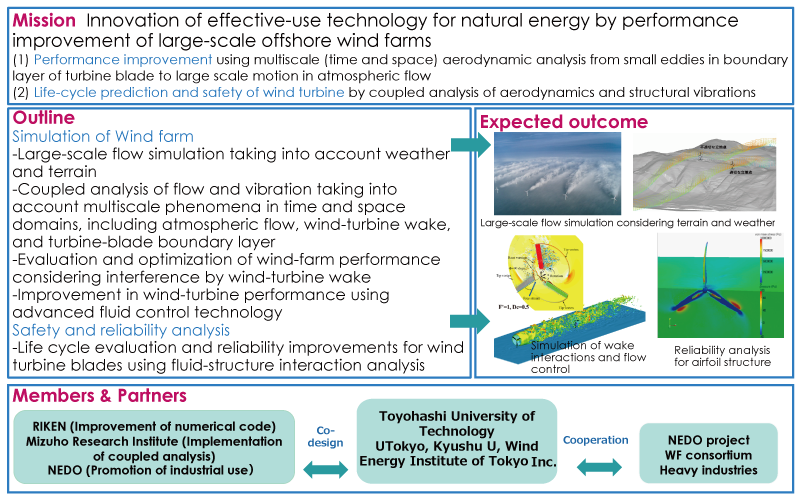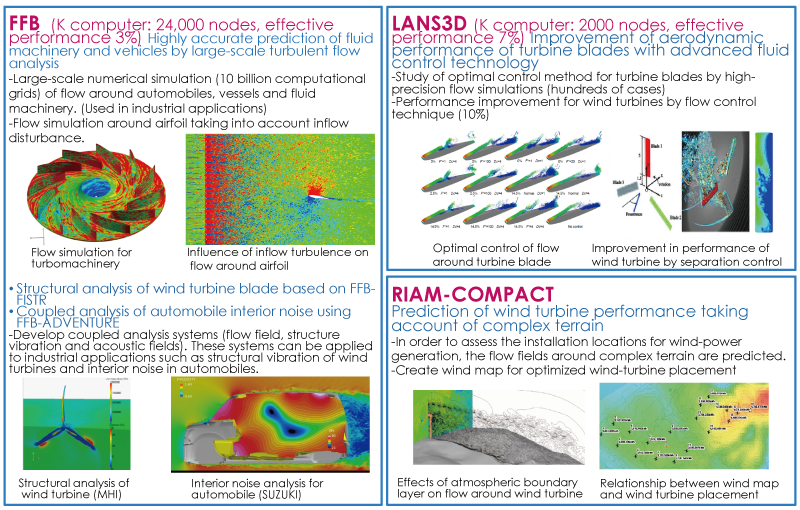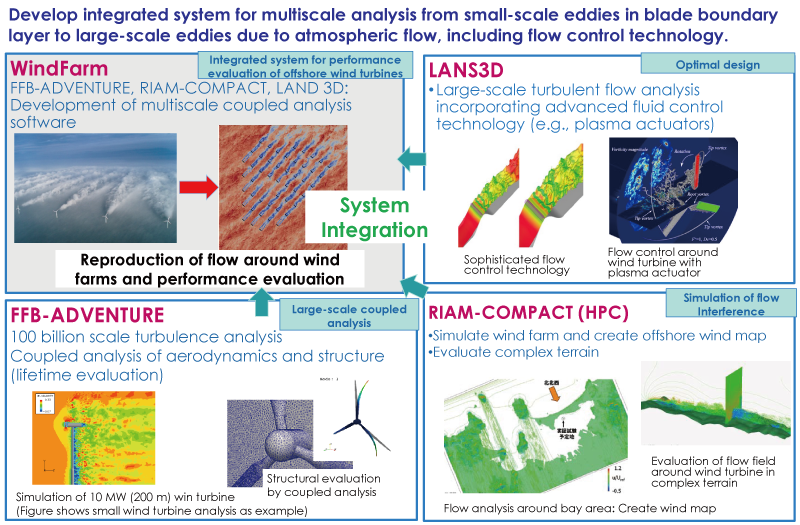Yoshimura Laboratory
Department of Systems Innovation, School of Engineering, The University of Tokyo
Sub-issue C
Offshore Wind FarmLarge Scale Numerical Simulations for Constructing High-efficiency Wind Power Generation Systems
- PI ; IIDA, Akiyoshi
Professor, Mechanical Engineering, Toyohashi University of Technology
An offshore wind farm consists of multiple wind turbines used for power generation. In order to promote the use of natural energy in Japan, the Japanese government has planned for the development of wind farms generating 4 million kw of power by 2030.
To improve the performance of wind farms, it is necessary not only to concentrate on the individual wind turbines, but also to reduce mutual interference among them. Moreover, in order to maintain stable power generation, it is necessary to predict the occurrence of fatigue fracture in the blades. Sub-issue C focuses on attempts to simulate an entire wind farm, which has not so far been possible using a conventional computing environment, using massively parallel computations of aerodynamics and structures.
We attempted to optimize the wind-turbine arrangement based on the predicted annual energy production. We also developed a flowcontrol technique for improving the performance of wind turbines using numerical results obtained using the K computer.
For large offshore wind farms, problems arising after construction will be difficult to tackle. It is therefore essential to predict in advance their performance in different flow conditions and situations. This has not been possible using a conventional computing environment at the design stage. However, it is within the capabilities of the post-K supercomputer.
Target
Performance improvements for wind farms taking into account interactions with wind turbine wake
Challenges
Flow around wind turbines in a wind farm is affected by both large- and small-scale phenomena, and the complex interactions among them.
Using conventional numerical flow simulations, it is not possible to consider all of these scales, and it is therefore necessary to rely on simplified models based on measurements and experience.
In this project, we attempt to develop a multiscale coupled analysis simulator using the K computer. With this system, it is expected to be possible to perform large-scale, ultraprecise calculations incorporating the effects of all of these scales.
This can be considered to represent a dramatic leap forward in the academic field of computational fluid dynamics.
Members
IIDA, Akiyoshi (PI): Professor, Department of Mechanical Engineering, Toyohashi University of Technology
IMAMURA, Hiroshi: Representative Director, Wind Energy Institute of Tokyo Inc.
UCHIDA, Takanori: Associate Professor, Wind Engineering Section, Kyushu University Research Institute for Applied Mechanics (RIAM)
HASEGAWA, Yosuke: Associate Professor, Institute of Industrial Science, The University of Tokyo
Large Scale Numerical Simulations for Constructing High-efficiency Wind Power Generation Systems
- Outline -

- Achievements using K computer and progress in preparatory phase -

- Applications on the post-K computer -

